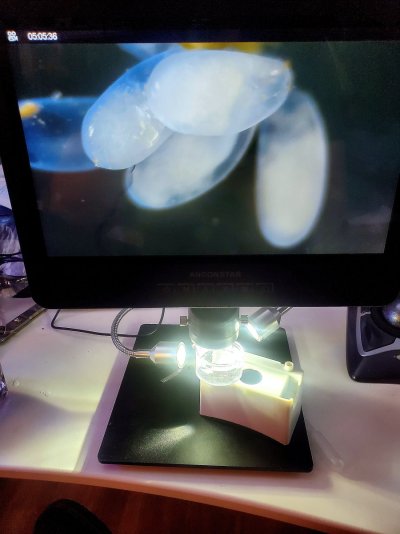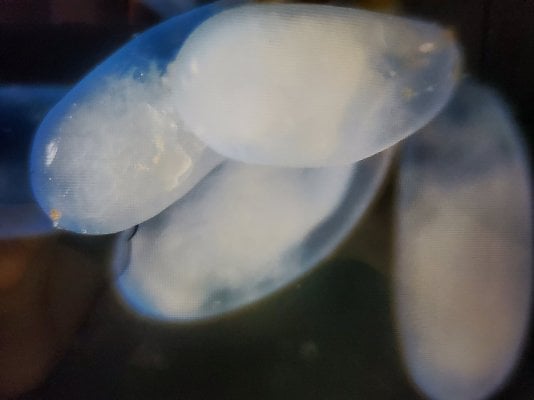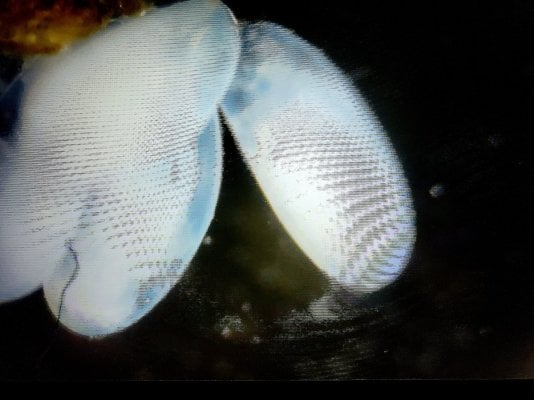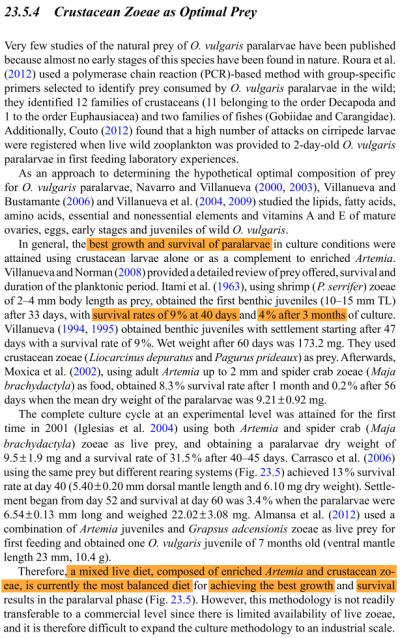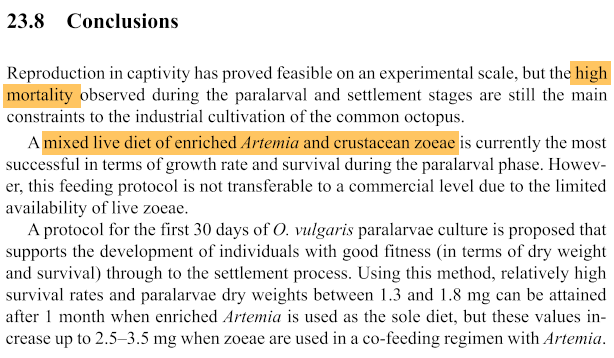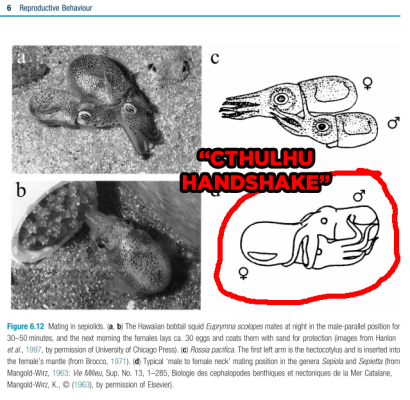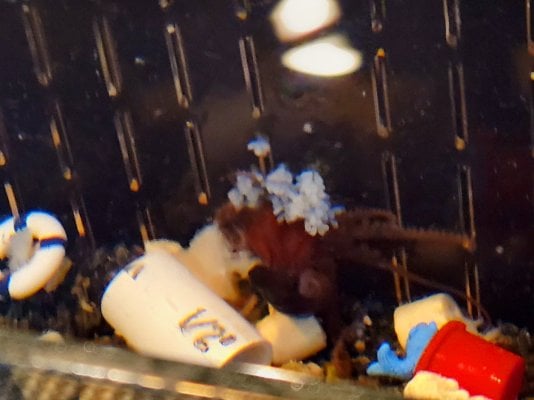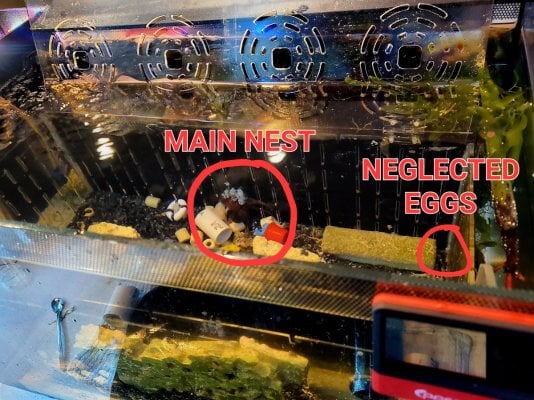Wasn't going to post this for fear of things going badly, but decided to post anyway because it could help someone else have success in the future.
I acquired 2 Pacific brown octopus 1 month ago on Sept 8th 2023. Same day shipping. One died the next day, the other survived ("Nugward").
I noticed on October 10th (one week ago) that Nugward was repeatedly pushing my finger away and that's when I spotted the first of the eggs (~10). The next day, there were a lot more (~20).
I went out and bought a 13 gal aquarium, and caulked a 150 micron mesh over the overflow, for this tank to be a dedicated octopus baby tank.
I had Nugward in a blacked-out large breeder box which had been hanging on the inside of my 100 gallon reef tank. My foxface and princess parrotfish would scrape algae off the outside of the breeder box, and the eggs would probably fit through the slits in the sides, so I moved the entire breeder box into the 13 gallon tank (the eggs are also fixed to the breeder box wall).
After moving Nugward + eggs + breeder box to the new tank, there are even more eggs on the wall, ~40 if I had to guess
Am I correct in assuming they are fertilized since they have not gone bad by now? Does anyone know the gestation time of Pacific brown octopus eggs? I literally can't find any specific info on this topic-- maybe I'm blind.
I am not prepared to take care of an entire brood of baby octopus, so any legitimate info on how long I have before this potential time bomb goes off is appreciated.
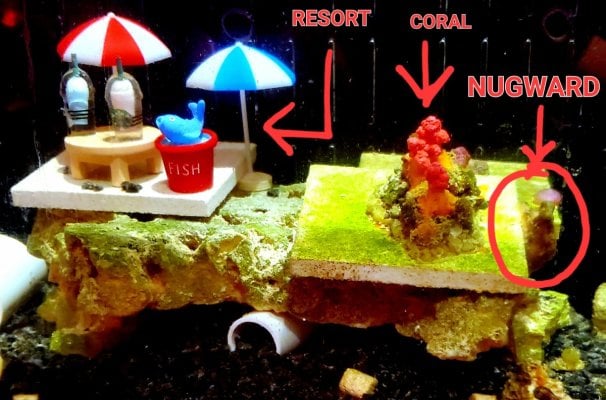
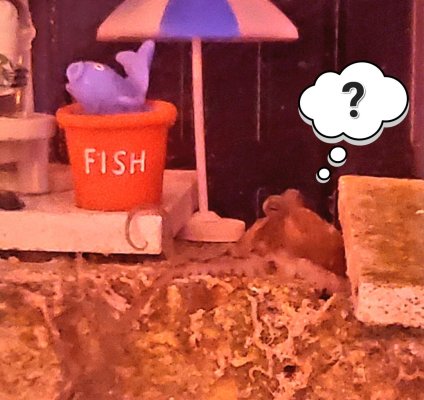
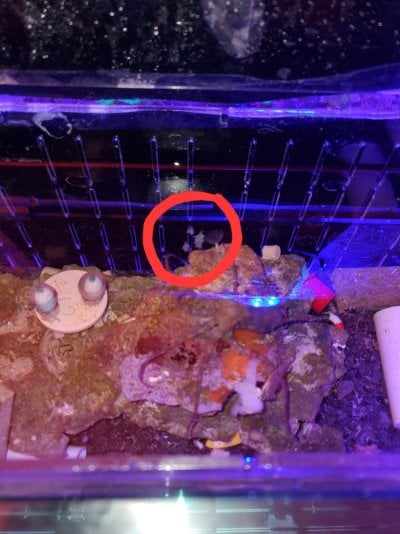
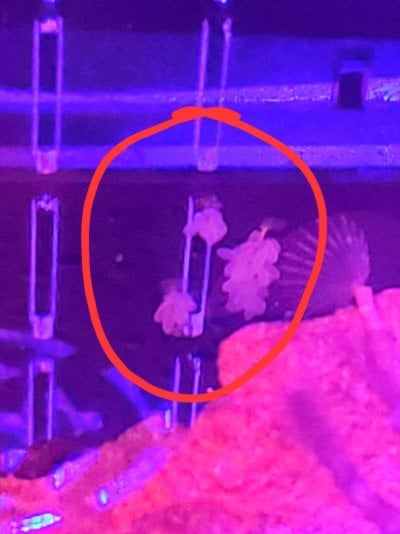
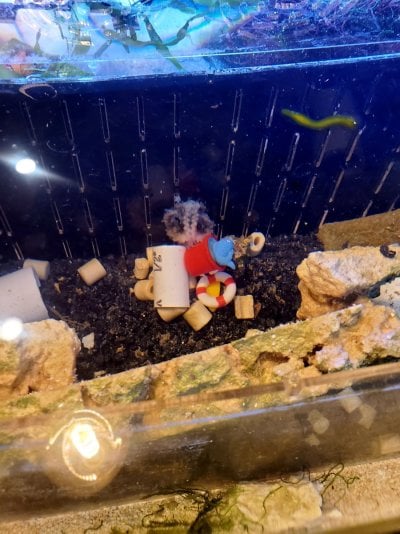
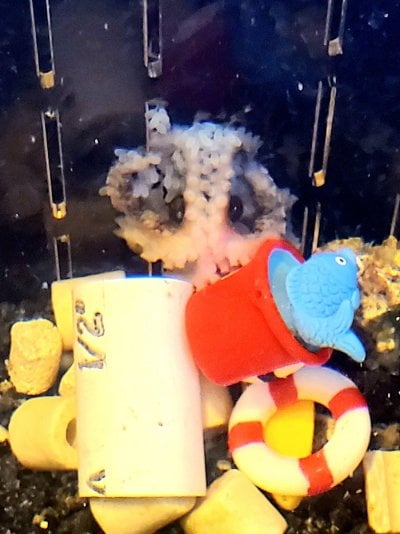
I acquired 2 Pacific brown octopus 1 month ago on Sept 8th 2023. Same day shipping. One died the next day, the other survived ("Nugward").
I noticed on October 10th (one week ago) that Nugward was repeatedly pushing my finger away and that's when I spotted the first of the eggs (~10). The next day, there were a lot more (~20).
I went out and bought a 13 gal aquarium, and caulked a 150 micron mesh over the overflow, for this tank to be a dedicated octopus baby tank.
I had Nugward in a blacked-out large breeder box which had been hanging on the inside of my 100 gallon reef tank. My foxface and princess parrotfish would scrape algae off the outside of the breeder box, and the eggs would probably fit through the slits in the sides, so I moved the entire breeder box into the 13 gallon tank (the eggs are also fixed to the breeder box wall).
After moving Nugward + eggs + breeder box to the new tank, there are even more eggs on the wall, ~40 if I had to guess
Am I correct in assuming they are fertilized since they have not gone bad by now? Does anyone know the gestation time of Pacific brown octopus eggs? I literally can't find any specific info on this topic-- maybe I'm blind.
I am not prepared to take care of an entire brood of baby octopus, so any legitimate info on how long I have before this potential time bomb goes off is appreciated.













